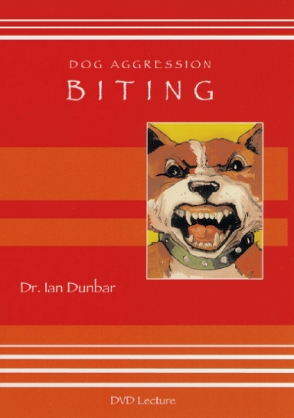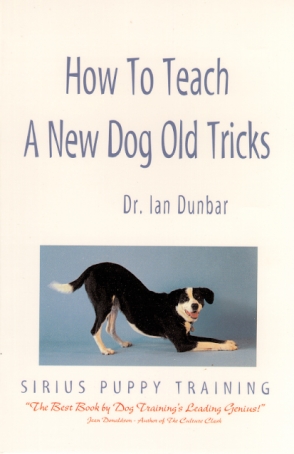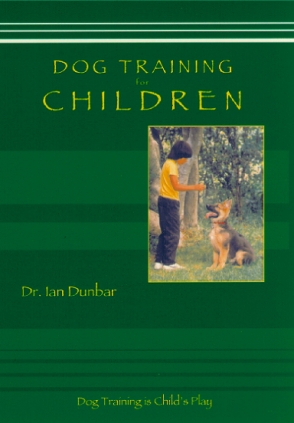In this DVD lecture, veterinarian and animal behaviorist Dr. Ian Dunbar addresses one of the most worrying behavior problems any dog owner can face — dogs that bite.
Litter Longevity Index

Breeding for Longevity
Initially, dogs were domesticated and bred as working dogs, for hunting, herding, draft and protection. Later they were bred for competition in their working abilities, plus conformation, obedience, agility, etc. In the past century or so, many of these dogs were invited into our homes as companion dogs.
When breeders selectively breed for work, show or competition, they significantly “cull” the litter by selecting the best puppies (by physical or behavioral phenotype) and offering the rest for sale as pet dogs. In fact, for a long time in the dog world, the term “pet dog” was a label of inferiority, which has always irked me. On the contrary, the moniker, “pet dog” is the very best blue-ribbon accolade that we could award any dog — a dog that has mastered a massive and varied syllabus, comprising every aspect of living with people, including basic manners, behavior and temperament problem prevention/resolution — a dog that thoroughly enjoys the company of children, men, strangers and unfamiliar dogs, cats and other animals.
In reality, breeders are primarily producing companion dogs, a few of which might also excel in show, work or competition. As such, pure breed dogs need to be specifically bred and raised as companion dogs.
So, what do we want for our pet dogs. Essentially, we want our canine companions to be friendly, well-behaved, healthy and long-lived — to enjoy robust, happy and lengthy lives with their human families, i.e., with us. It is especially heartbreaking when a companion dog becomes fearful, aggressive, sick, or dies prematurely — at three, five, or seven years of age, let alone during puppyhood, or adolescence. Consequently, all pure breed dogs should be selectively bred for longevity (the best index of overall health) and raised as pet dogs, i.e., thoroughly socialized with people and taught household and basic manners in the breeding kennel.
Behavior, Training & Temperament
Many breeders advertise that they breed for temperament, which is excellent. Realistically though, to have a meaningful genetical impact on the temperament of a breed is a complicated and time-consuming process, requiring multiple generations (20–35) along with vigorous culling. On the other hand, raising puppies to be good-natured, confident, well-behaved and mannerly is easier, quicker, more effective and a whole lot of fun. And what a selling point! — Puppies that are housetrained, chewtoy-trained, manners-trained and well-socialized with people, as opposed to puppies that are not housetrained, destructive, noisy, unruly and insufficiently socialized and so, prone to become standoffish-shy-wary-fearful and maybe aggressive during adolescence.
All puppies should be raised to be pet dogs, no matter what their intended station or role in life. Regardless of breed or breeding, socialization and training during puppyhood are the most influential variables that mold future behavior, manners and temperament in adulthood. Moreover, from a practical viewpoint, once we have puppies, once we have a zygote even, the Gene Team has made its last play and the only current options available are socialization and training in order to ensure these puppies become the best puppies possible (given their genetical constitution). Please check out the Puppy Raising Articles on Environmental Enrichment, Neonatal Handling, Safe Socialization in the Kennel, Housetraining, Chewtoy-Training and Basic Manners
“It’s easier to build strong puppies than to repair broken dogs.” (With apologies to Frederick Douglass)
Overall Health
There have been a whole variety of breeding programs focusing on reducing breed-specific inherited health problems. These programs have met with varying success. All too often, breed health programs are unintentionally sabotaged because so many dogs, especially males, are bred much too young — way before their genotype has been thoroughly evaluated in terms of likely predisposition to disease and other medical conditions. Yes, the young male studs are healthy at the time of mating but the big question remains, “Will they still be alive and healthy in their teens, or even when five years old? For the sake of dogs and their human companions, we must have a much better idea of the life-expectancy of prospective litters before deciding to produce one.
When a young male dog wins Best in Show, his stud career sky-rockets and his genes are rapidly disseminated among hundreds of puppies, which can flood a breed gene pool. In fact, it is not uncommon for a mating pair to share the same father, or for a litter’s father to also be the grandfather.
The unknown genotypes of a small number of phenotypically good-looking male dogs have become over-represented in the gene pool of many breeds.
Yes, we know the popular stud has some desirable genes that govern good looks and gait but before broadcasting these genes throughout the breed, we must first check whether or not the dog also harbors undesirable genes that might affect health or life-expectancy.
Dogs have an increasing number of genetically inherited health disorders, especially including cancer, cardiac, endocrine and orthopedic conditions, epilepsy, bloat, dermatitis, etc. Purebred dogs have more hereditary problems than cross-breeds, or mixed-breeds. However, cross-breeds and mixed-breeds are certainly not immune from the inherited disorders of purebred dogs, since they were descended from purebred dogs.
For factual information about genetics, health and life expectancy of dogs, check out Inbreeding in Pedigree Dogs(Imperial College, London) and Health of Pure Bred vs. Mixed Breed Dogs (Institute of Canine Biology) and, for a somewhat biased yet extremely disturbing glimpse at the plight of some pure-bred dogs, watch, Pedigree Dogs Exposed(BBC).
As difficult as it is for Kennel Clubs, Breed Clubs and veterinarians to objectively ascertain the genetical health of a breeding pair and their prospective puppies, it’s even more difficult for potential puppy buyers. An easy-to-interpret, more reliable, single index of puppy health and life-expectancy is desperately needed.
Longevity
Dying of old age used to be a common cause of death for domestic dogs. These days, old age is not so old anymore. Dogs are dying much too young largely because their parents were bred much too young, i.e., long before their genotypes had been thoroughly evaluated in terms of inheritable, life-threatening problems.
For people who share their lives with dogs, the dog’s longevity is everything. Yet there has been only limited selective breeding for longevity. With vigorous selection for working/competition abilities and breed conformation, longevity is just one of many variables and one that is not that high on the breeding agenda in the dog world because the career of most working/competition/show dogs begins to wind down at five to seven years of age.
Longevity is most strongly influenced by 1. Genetic hereditary and 2. Environmental factors, especially including, nutrition, infectious disease and accidental injury. Genes influence the onset of old age as well as being a causative factor for a wide range of life-shortening and life-ending medical conditions. Additionally, some dogs may be genetically predisposed to develop infectious diseases, metabolic conditions, nutritional deficiencies, behavior and temperament problems, and even accidental injury, (weak or malformed bones, ligaments, tendons, or muscles and of course, being deaf or blind). Simply put, genetical hereditary is the primary factor for determining overall health and hence, longevity.
How to Evaluate a Dog’s Genotype Prior to Breeding
Objectively evaluating the longevity, i.e., genotypical health, of a dog’s ancestors is more practical and easier than evaluating the DNA of individual dogs. The average lifespan of a Sire’s and Dam’s forebears probably offers the best predictor of health and life-expectancy for the Sire, the Dam and their offspring. Evaluating the pedigree is essential with female dogs because they need to be mated when young, yet mature — between three and five years of age.
However, male dogs do not need to mate when young and should not mate when young. Taking extra precautions is vital when choosing a prospective stud because a single male can radically change a breed gene pool in just a few weeks and a few dozen matings. With male dogs, we must be as certain as possible that they do not harbor any inheritable defect.
Phenotypical traits are manifested, or not, according to the expression of a unique combination of genes. Thanks to sexual reproduction, each dog has unique genes that are similar to but different from all of its ancestors, none of which have identical genes. As such, prospective studs need to be vigorously genotypically evaluated and from a practical viewpoint, the best way to do that is to to delay mating as long as possible, until seven years, or even ten and see whether it is still in good health, or whether it developed cancer, cardiac conditions, epilepsy, or bloat etc., or died prematurely.
Obviously, the expression of a genetically inherited, undesirable trait offers proof-positive of undesirable genes. Similarly, the absence of expression of a genetically inherited trait during the life of a dog is highly suggestive of the absence of those undesirable genes and the longer the dog’s lifespan, the more certain the premise. For example, let’s say a dog lived to be 17 years old with no veterinary bills aside from vaccinations and regular health checks. I would say, it’s a pretty good dog from pretty good stock. From a practical viewpoint: either a dog lives to a ripe old age, or the dog dies before its time. Longevity is certainly the best overall indicator of physical health, which is largely a reflection of its genotype.
Sires and Dams
Some owners of young male stud prospects may no doubt baulk at delaying mating for fear that by ten years their studs might be unable to mate, have a low sperm count, or have died already. I rest my case. On the contrary though, there are ten-year-old males of any breed that are just eager, willing and able to step up to the plate.
Of course, also, there is the artificial option of collecting lots of healthy sperm from young male dogs and just waiting to see which ones live to celebrate their tenth birthday before allowing it to be used.
Old male dogs still exist in many breeding kennels. Some have mated, some not. Should there be a ten-year-old that has never had a veterinary bill for any medical or surgical condition … Wow! I would say, that’s a reflection of an envied genotype — one not to be wasted. Inform the owners of all of his offspring that he lived to be a ripe old age and get him back on the road again. If he never mated, it’s high time he did. Let’s get him into a breeding program pronto. Yes, he may have a low sperm count and a number of malformed spermatozoa (as do all males) but he’ll probably have a sizeable number of healthy, robust sperm too … and it only takes one to fertilize an egg! And, if the endeavor is not successful, at least this old dog had his day.
Owners of male dogs may still be unenthusiastic about delaying mating but owners of bitches should insist that a stud has been proven to be genetically sound. The future of many breeds depends on discontinuing the practice of allowing young male dogs to mate willy-nilly and flood the gene pool with their, as yet, untested genes.
For bitches, there is no need to wait; look for a suitable, healthy ten-year-old male dog from a long-lived line now. For stud-selection to be a ruthless, objective endeavor is in the best interests of all dogs — all breeds, plus cross-breeds and mixed-breeds (that inherited their genes from pure-breeds), the kennel reputation, the litter and puppy buyers. And what an amazing selling point — long-lived, healthy puppies!
Kennel Club Breeders maintain their dogs are superior to puppy mill and pet store stock. What better opportunity to further improve their dogs’ superiority and to advertise the fact to the general public — long-lived, healthy puppies! Puppy buyers want transparency and they’ll never get it from puppy mills. Even the ancestry of many mixed breeds is more transparent than that of puppy mill and pet store livestock.
Litter Longevity Index — a Program to Select Puppies for Health and Longevity
The Longevity Index (LI) is the average of the ages at death (or current ages) of a dog’s eight great grandparents. Thus, a prospective Litter Longevity Index (LLI) would be the average of the Dam’s LI and the Sire’s LI. After whelping, puppies get their own LI.
It shouldn’t require rocket science to design an LI Database. Kennel Clubs already have computerized records of most pure-bred dogs, plus their birthdates and pedigree, all that needs to be filled in for each dog are the date of death, cause of death, plus any diseases/conditions that occurred during the dog’s life. Thereafter, a simple algorithm would automatically compute the LI for every living dog in the database plus the LLI for every prospective litter. Additionally, dogs with inherited conditions that may take several years to develop will become apparent and it will be easier to identify likely recessive carriers. Most important, prospective puppy buyers may now be much more discerning in their choice of breeder and litter. Everyone wants a healthy, long-lived companion dog.
Individual breeders would be encouraged to participate voluntarily and enter the relevant data for dogs in their kennel and in return, be allowed to access the database for free to research prospective studs and to advertise their litters (with puppy LI’s). Prospective puppy buyers would pay a small fee to access the database and search for breeding kennels and litters.
A similar database could be made for designer cross-breeds. One of the benefits of purchasing a purebred or crossbred dog is that you know its ancestry and so can evaluate the lifespan of every dog in a pedigree and the likely life-expectancy of offspring. Even so, the same could be done for mixed breeds, at least trying to identify their parents, and maybe grandparents.
Who is Going to Host the Program?
It would be wonderful if such a program to selectively breed for overall health and long-lived dogs remained the domain of Kennel Clubs because they have been ambassadors for pure bred dogs for well over a hundred years and the program would be so easy for them to implement.
Regardless, I am confident it will happen because companion dogs are now a multi-billion-dollar business with limitless advertising and sponsorship opportunities. Maybe, an enterprising start-up with a dog-loving sponsor or venture capitalist might get it done, especially considering that prospective puppy buyers will flock to the database.
Who is Going to Monitor the Program?
To be realistic, it’s unlikely that breeders will delay mating a male dog that has stellar conformation, or relentless focus and drive, however, it is still in their best interests to more thoroughly evaluate pedigrees of prospective breeding partners in terms of health and longevity. I know a surprising number of working and competition dogs whose careers were cut short by disease or injury prior to three years of age.
Once prospective puppy-buyers learn that they have choices when selecting a pup — long-lived vs. short-lived, healthy vs. unhealthy and of course, housetrained vs. not housetrained, they will be much more discerning when making their choices. Indeed, the program will eventually, but inevitably, become consumer-driven — by educated, discerning, prospective puppy-buyers.
A live dog is better than a dead lion.Ecclesiastes, 9.4
The first draft of this article appeared in the AKC Gazette in the early 90’s, titled, Seven Star Stud, proposing that male dogs should not be bred until they were at least seven years old. I first proposed the notion of a Litter Longevity Index shortly afterward at the World Congress of Kennel Clubs, held in Bermuda. Having experienced three of my pure-bred dogs dying between five and eight years of age and one shortly thereafter, I now think 10 years would be more appropriate minimal breeding age for male dogs, so that least we know for sure that half of a puppy’s genetic inheritance comes from forebears that lived long and healthy lives.
Dedication
To Dune because he lived to be twelve. He was extremely well-trained and honestly, I cannot recall a single behavior or temperament problem. His temperament was rock-solid with people, dogs, children, puppies, little animals and big animals. Moreover, he was loving and had a great sense of humor. Because of all that, years ago, I promised him that if he lived to be ten and was still healthy, I would arrange a “boy trip” across the country to find the best American Bulldog bitches available. He lived a good age and only had two very minor injuries during his lifetime. But we didn’t make the trip.
But also, to Omaha, my first dog (an Alaskan Malamute who died at five), Hugo (a French Bulldog who died at seven) and to Zouzou (a Beauceron who died just after her eight birthday).
I promised ZouZou in the year that she was dying that I would try and do something about the all-too-short lifespans of dogs, so that their humans could enjoy them for a decent length of time and not be devastated by their unnecessary, premature death.
I failed Dune. What an incredible waste of incredible genes. But I’m keeping my promise to ZouZou.










